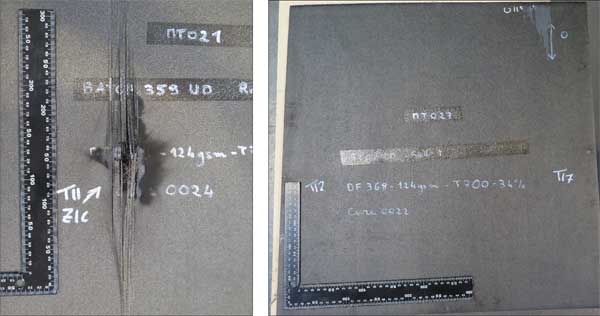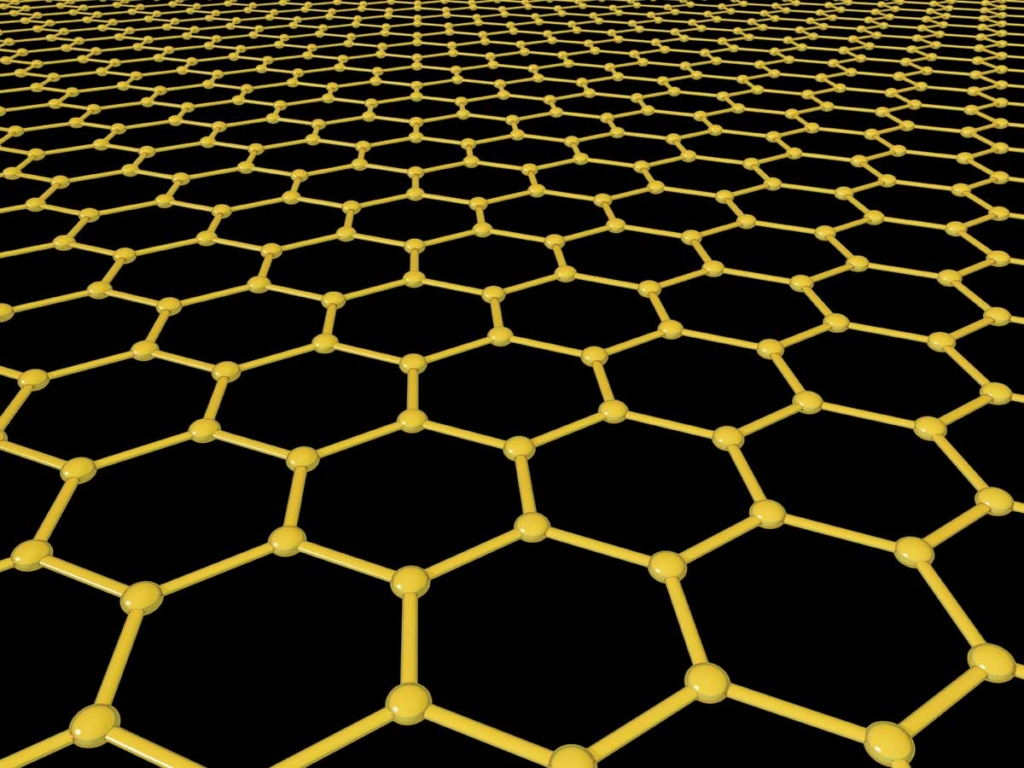Extracting graphene from the laboratory has proved challenging, but as Ray Gibbs explains, improvements in material processing are beginning to pay off, particularly in the aerospace sector
Graphene has many amazing properties, including high strength and stiffness, high conductivity and impermeability to gases, to name but a few. These headline-grabbing properties have generated a considerable amount of hype, with potential new applications announced almost every day. However, as the graphene story has progressed, the task of translating properties measured in the laboratory into commercial applications has proved a greater challenge than many had anticipated. In particular, producing consistent single layers of graphene – the starting point for many potential electronics applications – is a technically difficult task, and doing so on a commercial scale is expensive.
Fortunately, other types of graphene are beginning to prove their worth in other industry sectors. At my firm, Haydale, our focus is on stacks of graphene with 5–100 layers. Materials at the lower end of this range are generally known as few-layered graphene (FLGs), while those at the higher end are termed graphene nanoplatelets (GNPs). When these materials are added to a resin or other thermoplastic material, the resulting mixture can become stronger, and may also become thermally conductive, electrically conductive or both. These enhancements could have applications in many areas, but they appeal particularly to the aerospace industry. Many key aircraft parts are made from carbon fibres bonded together with a thermoset resin. If this resin had better mechanical properties, it might be possible to reduce the number of carbon-fibre layers required – saving weight and thus cost.
Our experiments indicate that substantial improvements are possible: in one recent test, a carbon-fibre composite with FLGs added to the resin showed a 20% improvement in almost all mechanical properties. However, getting there involved much more than simply adding graphene to resin. The key to realizing the well-documented properties of graphene lies in starting with the right material and knowing how to process it for particular applications.
Producing graphene
Graphene can be produced in a number of ways, and individual manufacturers use slightly different processes. One common approach is the “top down” method, where mined organic graphite is exfoliated to produce flakes of fewer layers. Getting down to the desired number of layers may require multiple production stages, since the thickness of most organic materials varies. However, in bulk systems such as the composite inks, pastes and resins we work with, this is not a huge issue.
Alternatively, graphene can be produced layer-by-layer in a “bottom up” method such as chemical vapour deposition using methane gas or another carbon source. This process typically requires operating a reactor at energy-intensive temperatures (900 °C or more), and the reactors must also be cleaned after each batch is produced. Additionally, in many cases the graphene sheets produced by this method are not single layers but FLGs two or three layers thick. Expensive “release tapes” must then be used to peel off individual layers.
Clearly, graphene produced via the top-down method is very different from the bottom-up variety, both in its properties and in its manufacturing cost. However, due to a lack of industry standards, many different carbon nanomaterials can be described as “graphene”. As a result, the prices of similarly labelled products can range from $50 to more than $2000 per kilogram. The temptation is to plump for the cheapest one available, but often this is not the best option. This is because every material produced at the nanoscale is different – in flake size, thickness and, crucially, the types and amounts of chemicals bonded to its surface and ends. These chemical groups are often involved in binding the graphene to other materials, and can thus affect the properties of the mixture. For example, a material with a lot of oxygen groups will act as an insulator, not a conductor. The size and shape of the flakes can also affect thermal conductivity, electrical conductivity and/or mechanical uplift.

In our experience, whatever the desired application, mixing and dispersion know-how is crucial to “functionalizing” graphene (that is, getting other chemical groups to bond with it). Carbon as an additive is inert and does not mix well with other materials, so to get it to disperse in a homogeneous fashion, one needs both a good understanding of functionalization and a detailed knowledge of the particles’ size and shape – which, when the particles are 2–5 µm across, requires special skills and equipment. It is also worth pointing out that adding nanomaterials to other substances does have some potential drawbacks; for example, it could change the viscosity of a resin, which can affect later steps in the production process. Often, there will be a trade-off between the desired performance of the final product and other properties that existed before the nanomaterials were added.
To develop our understanding of these issues, Haydale has conducted an 18-month programme of research in collaboration with Huntsman Advanced Materials using its high-end epoxy resin, Araldite. This work has given us considerable expertise of the mixing and processing techniques required to properly disperse graphene and other nanomaterials into a thermoset or thermoplastic resin. It has also become abundantly clear that adding a second nanomaterial (such as carbon nanotubes or silicon carbide) alongside graphene can have significant effects on performance, over and above the effects of purely adding graphene alone. We believe that this process, which we term “material hybridization”, holds great promise for the future commercialization of composites and, indeed, other materials such as inks.
Taking flight
Since 2014 scientists at Haydale have been using functionalized graphene to improve the performance of carbon-fibre composites in the aerospace industry. This project was based on requirements specified by the Centro Italiano Ricerche Aerospaziali (CIRA), and was managed by an integrated team from CIRA, Haydale and the school of engineering at Cardiff University in the UK, with financial support from the Europe-wide Clean Sky Joint Technology Initiative.
Compared to resins, carbon fibres are immensely stiff and strong, so the structural properties of a component made from a fibre-reinforced composite is dominated by the properties of the fibre, not the resin. Hence, even though adding functionalized graphene to neat resin has been shown to double the resin’s stiffness, one would expect the effect on the macrocomposite to be smaller. Our research investigated the effects of adding both GNPs and carbon nanotubes to resins, and we observed a 13% increase in compression strength and a 50% increase in compression after impact performance. These are both
significant results, since damage resistance and compression properties are of paramount importance in high-performance structures such as composite aircraft wings.
Scientists in Haydale’s composite division (Haydale Composite Solutions) are currently working with industrial partners such as Cobham Technical Services, Airbus and BAE Systems on two research projects that use functionalized nanoparticles to make aircraft components electrically conductive. The first project, Graphene Composites Evaluated in Lightning Strike (GraCELS), is investigating how functionalized nanoparticles affect the conductivity of carbon fibre-reinforced epoxy panels. The GraCELS experiments have shown that adding nanoparticles to the epoxy substantially improved the panels’ electrical conductivity, and greatly enhanced their tolerance of lightning-strike damage. In particular, the modified panels showed no sign of “punch through” damage when subjected to a severe lightning-strike event (see images above).
The second project, known as Graphene-Enhanced Adhesive Technology through Functionalization (GrEAT Fun), is focused on the bonds between carbon-fibre panels in aircraft, rather than the panels themselves. Adhesive bonds made using conventional techniques are generally electrical insulators, which is a problem if we want the structure of the aircraft to conduct electricity. Previous studies have attempted to improve the electrical conductivity of structural adhesive bonds by adding metallic particulates or carbon nanotubes to the bonding material, but these efforts have had limited success in producing bonds that are strong and reliable as well as electrically conductive.
The GrEAT Fun project, in contrast, will use a patented technology for functionalizing GNPs to significantly improve the electrical conductivity of adhesive bonds as well as enhancing the strength of the bonded layer. This functionalized graphene can be incorporated into a thermosetting matrix resin. Inevitably, there will be a trade-off between mechanical and electrical performance and the ease of processing the modified resin; one of the project’s goals is to establish the level of graphene loading that leads to the best overall performance of the adhesive.
Future applications
The aerospace industry is likely to be an early adopter of the adhesives developed during the GrEAT Fun project, but other fields may also benefit. For example, improvements in the electrical conductivity of structural adhesive resin systems could enhance the performance of large off-shore wind turbines, while in the oil and gas industry, conducting resins could make it easier to dissipate static electricity and prevent it from causing damage to pipelines. As for the structural properties of functionalized graphene, there are myriad potential applications, from damage-resistant shower trays to tougher sporting equipment. The transport industry is likely to benefit, too, although here the time frame will be longer due to the regulated nature of the industry. Commercial applications for graphene may have taken longer to emerge than the hype suggested, but these recent developments could finally harness the wonder material’s amazing properties.




